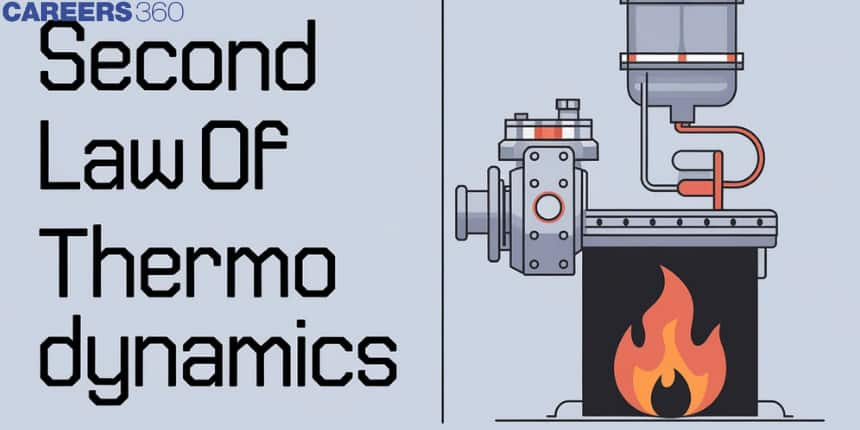Second Law of Thermodynamics
One of the basic principles ruling physical processes, the Second Law of Thermodynamics deals with the spontaneous direction of energy transfer and the new concept of entropy. It says that the sum of the entropies of an isolated system will always grow larger or remain constant over time, never decreasing, for any natural thermodynamic process. It is the first law to introduce irreversibility in natural processes, while those described by the First Law of Thermodynamics are reversible. The Second Law has many statements, one of which is the Kelvin-Planck statement: "No heat engine can convert all of the heat supplied to it by a single thermal reservoir into work with no other effect."
NEET 2025: Mock Test Series | Syllabus | High Scoring Topics | PYQs
JEE Main: Study Materials | High Scoring Topics | Preparation Guide
JEE Main: Syllabus | Sample Papers | Mock Tests | PYQs
- Second Law of Thermodynamics
- Some Solved Examples
- Summary

Second Law of Thermodynamics
It is not possible to convert heat into work without compensation.
Work can always be converted into heat but the conversion of heat into work does not take place under all conditions.
It is impossible to construct a machine that is able to convey heat by a cyclic process from a colder to a hotter body unless work is done on the machine by some outside agency (Clausius statement).
The heat of the coldest body among those participating In a cyclic process cannot serve as a source of work (Thomson statement).
It is Impossible by means of the inanimate material agency to derive mechanical work or effort from any portion of matter by cooling it below the temperature of the coldest of the surrounding objects (Kelvin-Planck statement)
Nature tends to pass from a less probable to a more probable state (Ludwig Boltzmann statement).
Whenever a spontaneous process takes place it is accompanied by an increase in the total entropy of the universe.
Recommended topic video on ( Second Law of Thermodynamics)
Some Solved Examples
Example 1: Which of the following processes is iso-entropic?
1)Isobaric process
2) Adiabatic process
3)Isothermal process
4)Isochoric process
Solution
As we have learned,
According to the definition of entropy,
Change in entropy,
As the heat change in the adiabatic process is equal to zero. Hence the change in entropy will be zero, which means the entropy will change in the process.
So the adiabatic reversible process will iso-entropic process as well.
Example 2: The entropy (So) in (JK-1mol-1) of the following substances are :
The entropy change
1) -312.7
2)-242.8
3)-108.1
4)-37.6
Solution
In the given reaction:
Hence, the answer is the option
Example 3: A sample of 18 g of H2O is slowly heated from 300 K to 400 K. Calculate the change in entropy (in J/K) during heating. (Given: specific heat of water is
1)7.81
2) 21.75
3)-7.81
4)36.25
Solution
As we learned,
Hence, the answer is (
Summary
The Second Law of Thermodynamics states that the total entropy of an isolated system cannot diminish but either increases or remains constant over time; thus, it forms the spontaneity of energy transfer and the irreversibility in processes. It refers to an intrinsic tendency to disorder and equilibrial states; hence, it is not possible to transform heat into work without any other effects, totally. This law is expressed by means of the Kelvin-Planck statement, which forbids the perfect conversion of heat into work, and the Clausius statement, which rejects the spontaneous flow of heat from cold to hot bodies.
Also Read
19 Feb'25 12:52 PM
19 Feb'25 10:40 AM
19 Feb'25 10:36 AM
19 Feb'25 10:35 AM
19 Feb'25 10:16 AM
18 Feb'25 11:45 PM
18 Feb'25 11:43 PM
18 Feb'25 11:40 PM
18 Feb'25 11:38 PM
18 Feb'25 11:36 PM

